(this is a guest post by Antoni Sawicki aka Tenox)
As I was preparing the Windows NT RISC exhibit for VCF west, I realized that I’m missing a rather important piece of the history. While I will be showing the potentially last DEC Alpha Windows build ever – AXP64 2210, I don’t have anything earlier than NT 3.51. It would be nice to showcase the very first RTM version – NT 3.1. From time perspective, NT did not get popular until the version 3.5 and later. Windows NT 3.1 would be considered rare even on a 386, let alone on a RISC CPU! So what RISC hardware does Windows NT 3.1 run on?
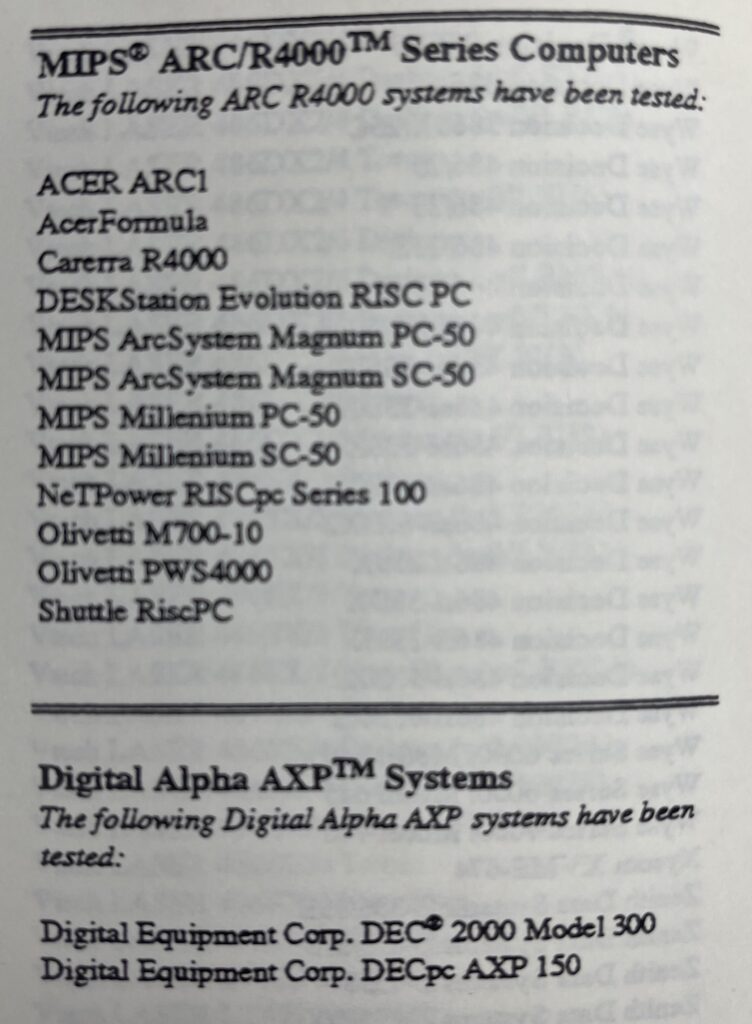
Not many! The HCL published on gunkies has a few more systems, but nothing that I have. The early MIPS based systems are all but unobtanium as of today. This is probably a good time to mention a little known port of Windows NT 3.1 to the DECstation 5000. However these builds are not found even on earliest NT betas. Not to mention lack of ARC firmware for this machine.
The Alphas were looking a little more reachable. The DEC 2000 Model 300 and DECpc AXP 150 are one and the same machine, packaged in a server and workstation cases. Code-named Jensen, DEC designed and marketed these specifically around Windows NT. Unlike prior Alphas, this model used a lot of “PC” components for increased compatibility and lower cost. Eventually paved way for the more well known DEC Multia. The Jensen has been seen floating here and there and many people have these.
I was able to get a loaner from Chris Satterfield aka Compgeke for the VCF. Having a working specimen at hand, I started looking at part numbers of various components. In an amazing streak of luck, in practically zero time I was able to find, buy and assemble a complete DECpc AXP 150 from spare parts on eBay! Without a case, but nevertheless. Also big thanks to Christopher Rivett for help with some fine details!
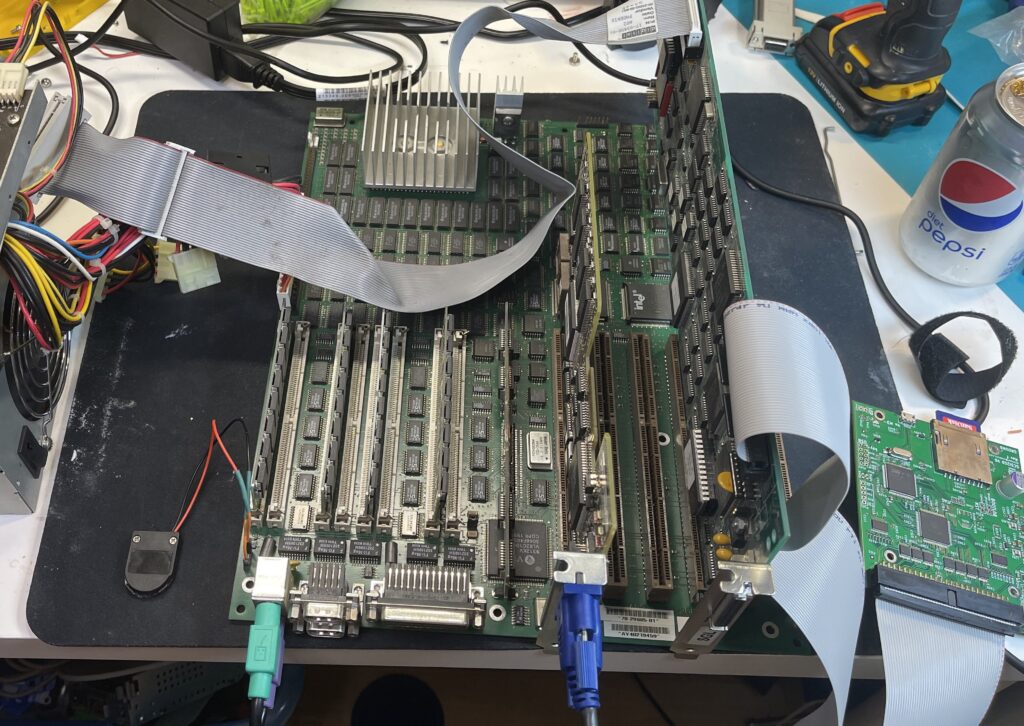
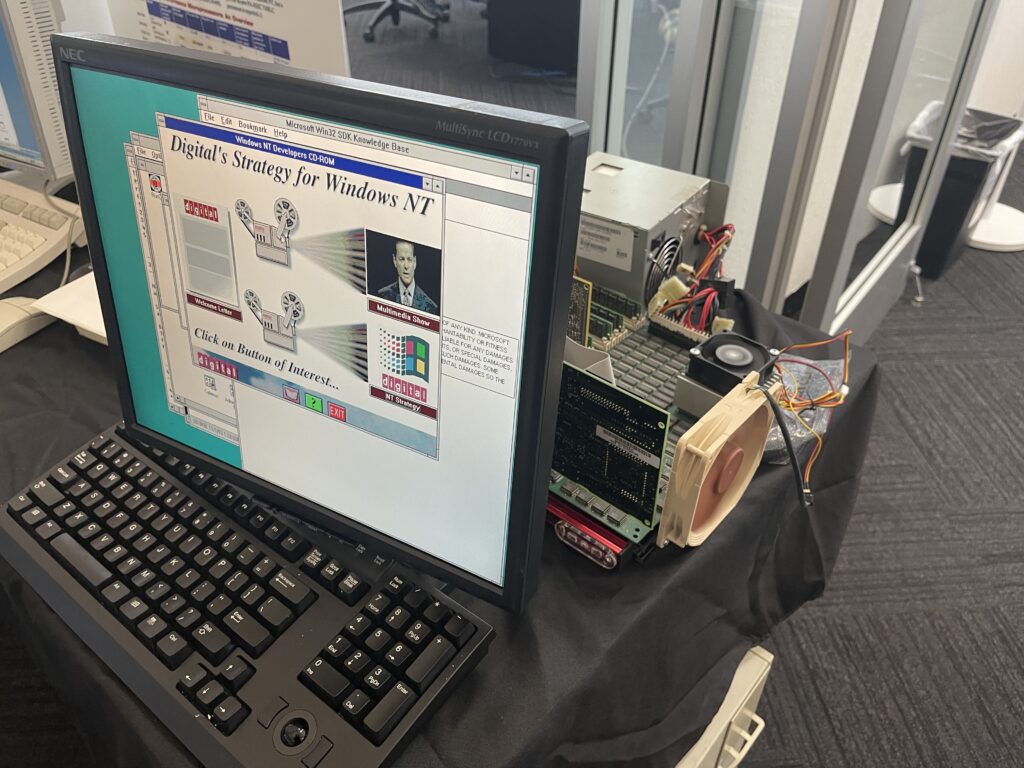
BOM
- Motherboard + CPU – DEC 70-29685-01
- GPU – DEC/Compaq Qvision 1024/E (1024×768) – 126654-001
- GPU – (Optional) Number 9 High Res (1280×1024) – 30-41800-01
- HBA – Adaptec AHA-1742A EISA – 467806-00
- NIC – DEC DE422-S EISA – 5021102-01
- RAM – 4x 16MB, FPM, 60ns, 72-Pin, 12-Chip, True Parity SIMM
- PSU – DEC/HP 30-37197-02, however a standard AT PSU may be OK
If you going to build one yourself, beware of overheating. Jensen runs rather hot and needs good cooling. Not only for the CPU. There is a section of the motherboard just under the EISA cards that runs incredibly hot. See the picture, where I have installed a large Noctua fan.
OS Install
There are many Windows NT 3.1 CDROMs floating around. I purchased a DEC branded, shrink-wrapped CD on eBay to use as a prop along with the machine. You can download the iso image here.
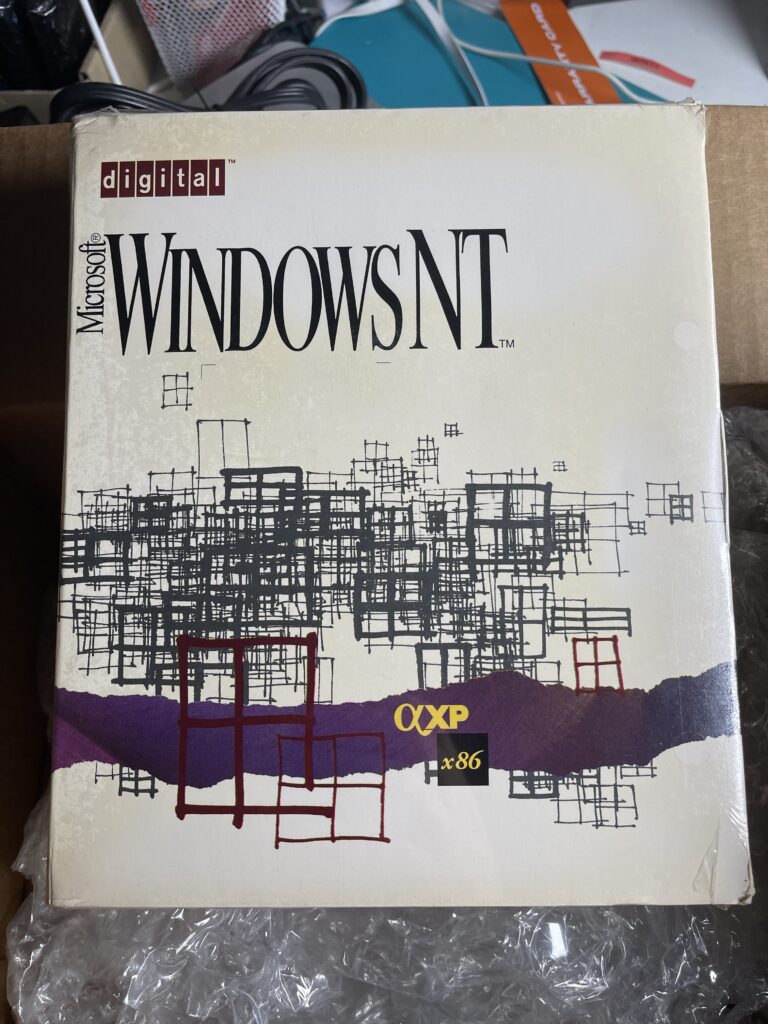
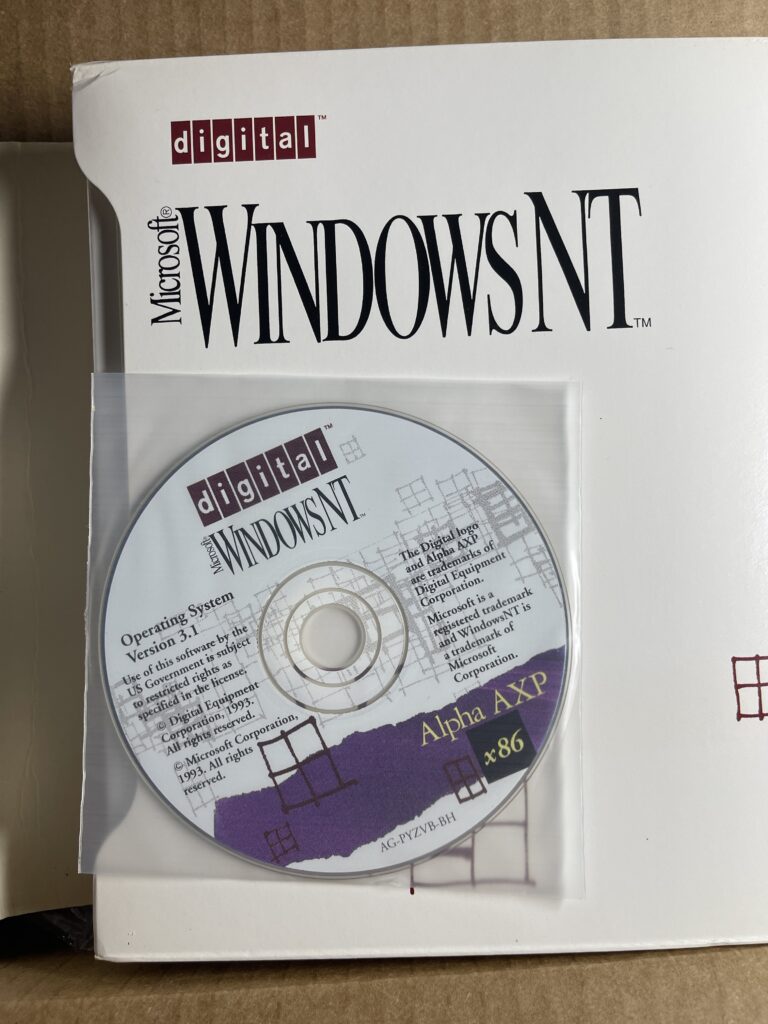
Installation of Windows NT 3.1 on DECpc AXP 150 is pretty straightforward and not that much different from the later versions. However as a prerequisite you will need the ECU floppy disk to configure the EISA slot assignments, card and jumper settings. After that you will have to go through various setup screens in ARC BIOS to configure system settings. Then you run arcinst to create a system partition and setupldr to install the OS. The rest of it is pretty uneventful. This is somewhat expected, as this was pretty much the only one and supported hardware combination, so must have been well tested. The only curious part is that the NT OS Kernel does not display any text during normal boot. Later versions of NT will display the build number and MP or UP kernel variant and dots indicating subsystem load progress. This is rather odd because I expected more text mode stuff from older NT version, but who knows.
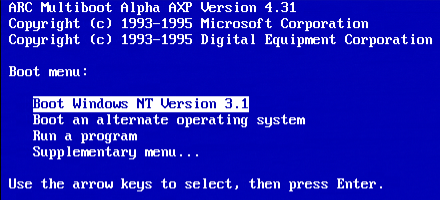
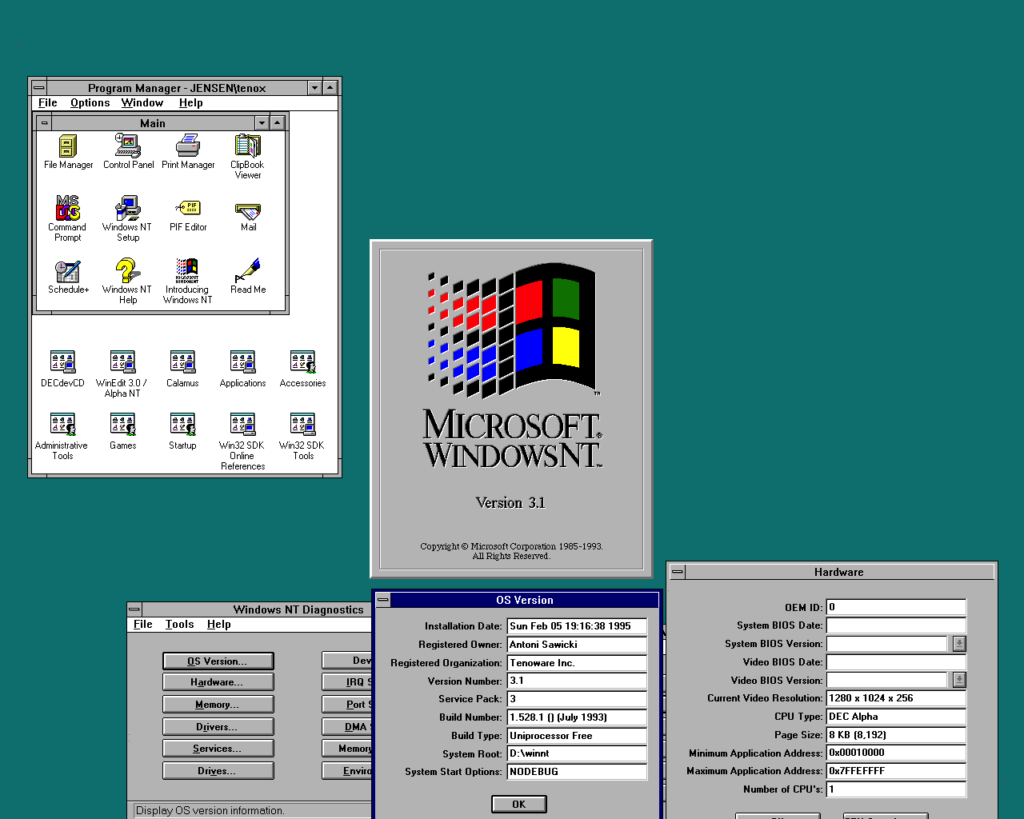
Service Pack Saga
If you are even vaguely familiar with installing Windows NT at all, you will know that the very first thing you have to perform after installation, is to apply a service pack. NT 3.1 did have service packs, up to SP3. The problem is that, as you may very well expect, non-x86 editions were nowhere to be found in 2023. The only thing I could come up with was http://www.win31.de/ent31.htm, which had a German AXP and MIPS SP3, but no English! [It since has been updated…]. I had to do some real detective work to track down an US-English AXP SP3 version. I spent a few days going through various random CDs and ftp site mirrors of that era, with little luck. Eventually I stumbled on this README file, stating:
Due to space constraints on the Windows NT Service Packs for
International Versions CD, the USA Service Pack version 3 is located on
the Additional Windows NT Service Packs, Windows 3.11 versions, SDKs,
and DDKs CD in the NTSRVPC3\USA directory.
Bingo! After a few hits and missed I spotted this particular CDROM here: https://archive.org/details/microsoft-developer-network-january-1995-disc-4-of-15 – Now the OS is finally “servicepacked” 🙂
Applications!
My general impression of NT 3.1 on DEC Alpha is pretty awesome. If you can overlook the age and some obvious shortcomings, the OS is pretty stable, solid and even snappy for such old hardware. An OS itself without apps is not much. While overall Alpha NT application outlook is pretty scanty I was able to find a several very interesting gems!
Most importantly, thanks to Chris, a DEC Windows NT Developers CD-ROM!
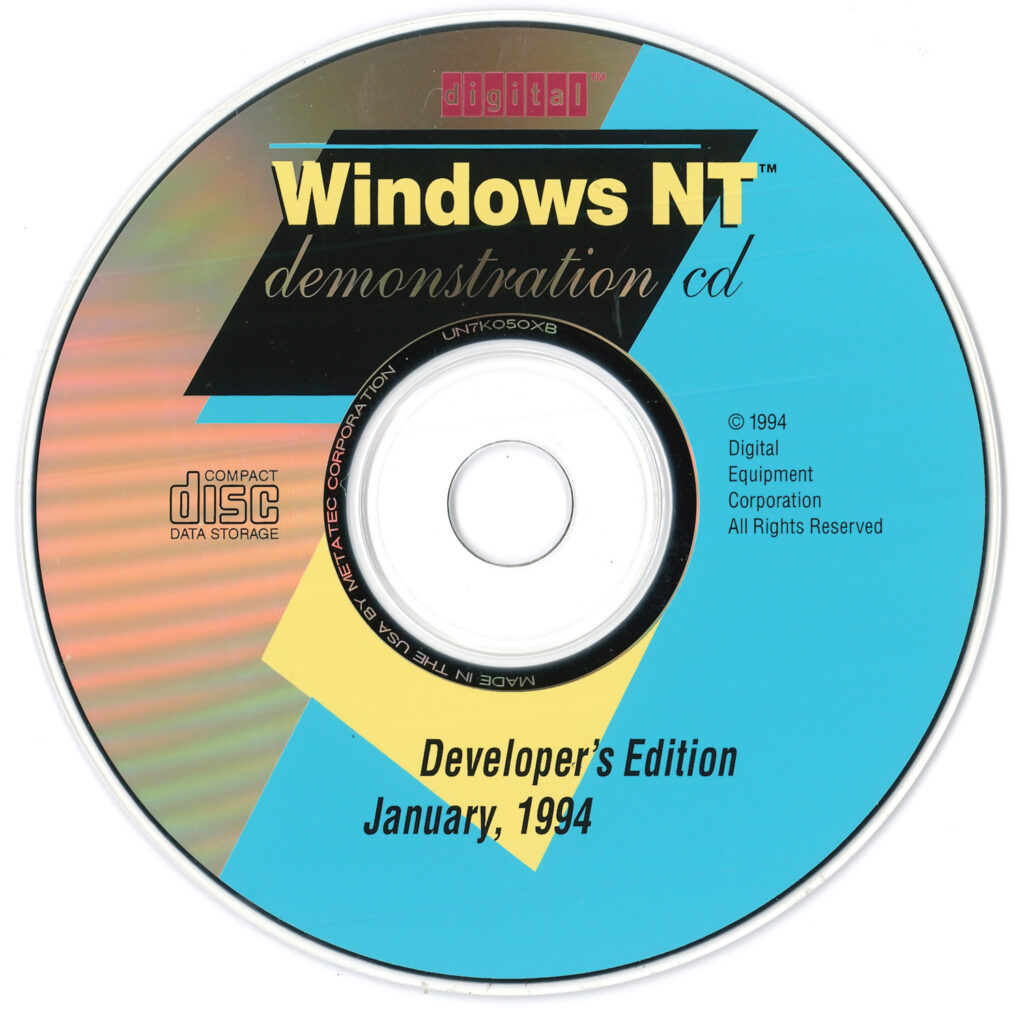
The disk has an incredible amount of demo, freeware, public domain and shareware applications as well as DEC marketing material.
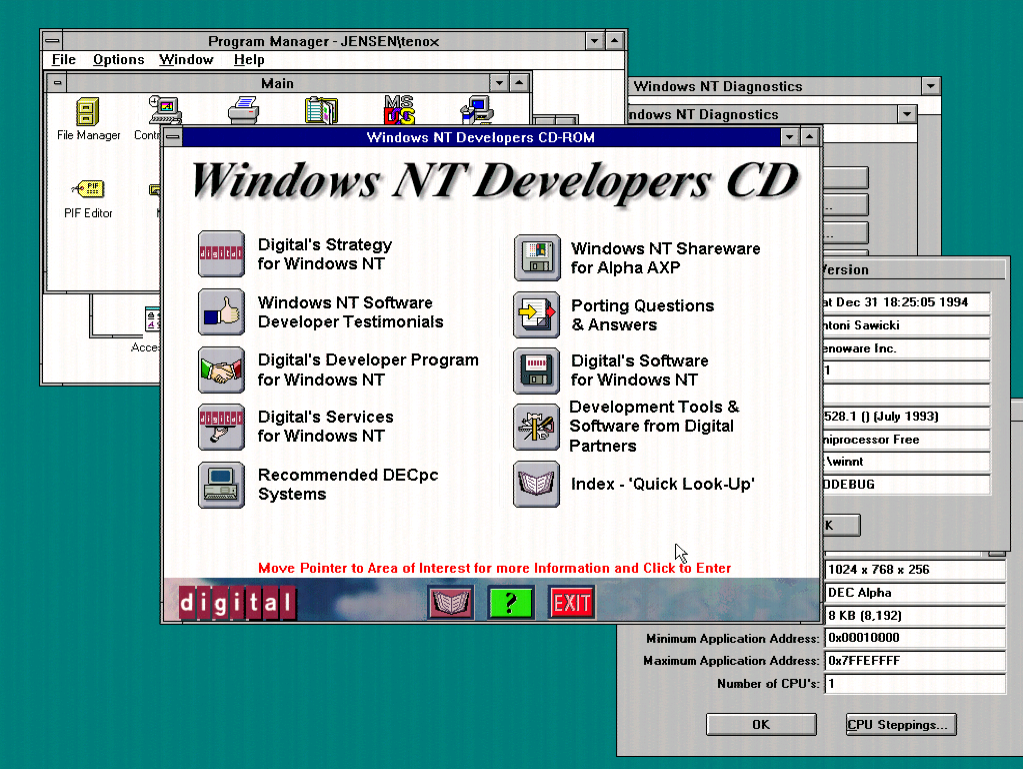
You can get a lot of DEC proprietary software like C++, Fortran, PATHWORKS, DECtalk, as well as X servers, etc.
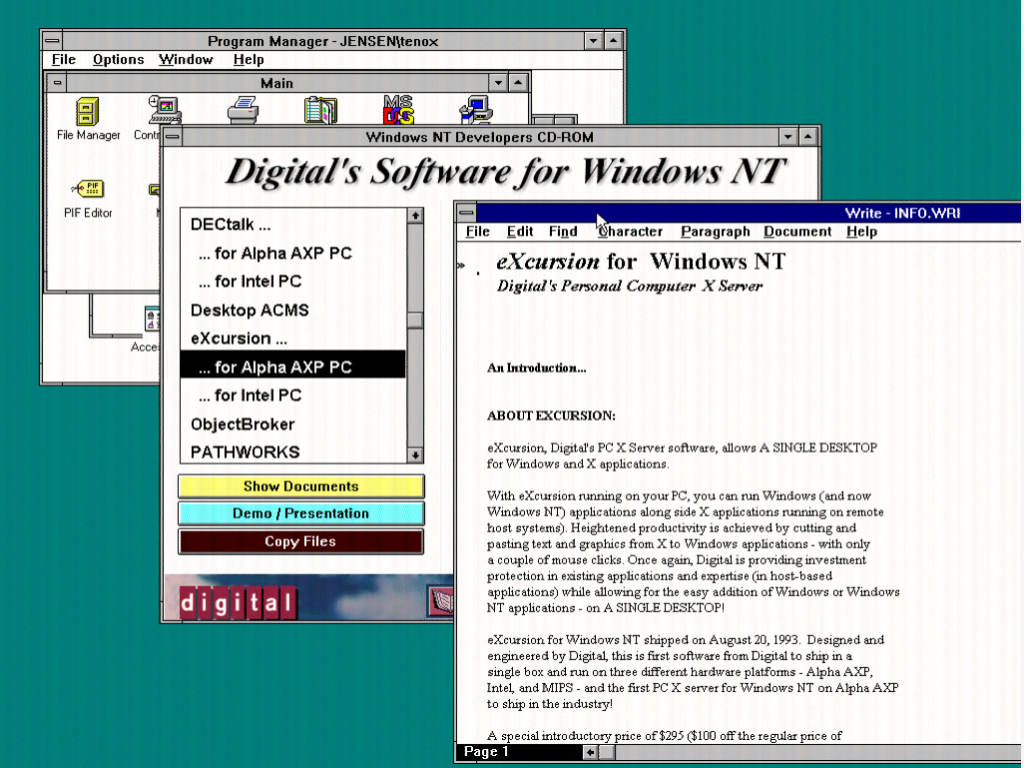
However I was particularly interested in some 3rd party commercial apps.
For example there is an early version of DMC Calamus Desktop Publishing.
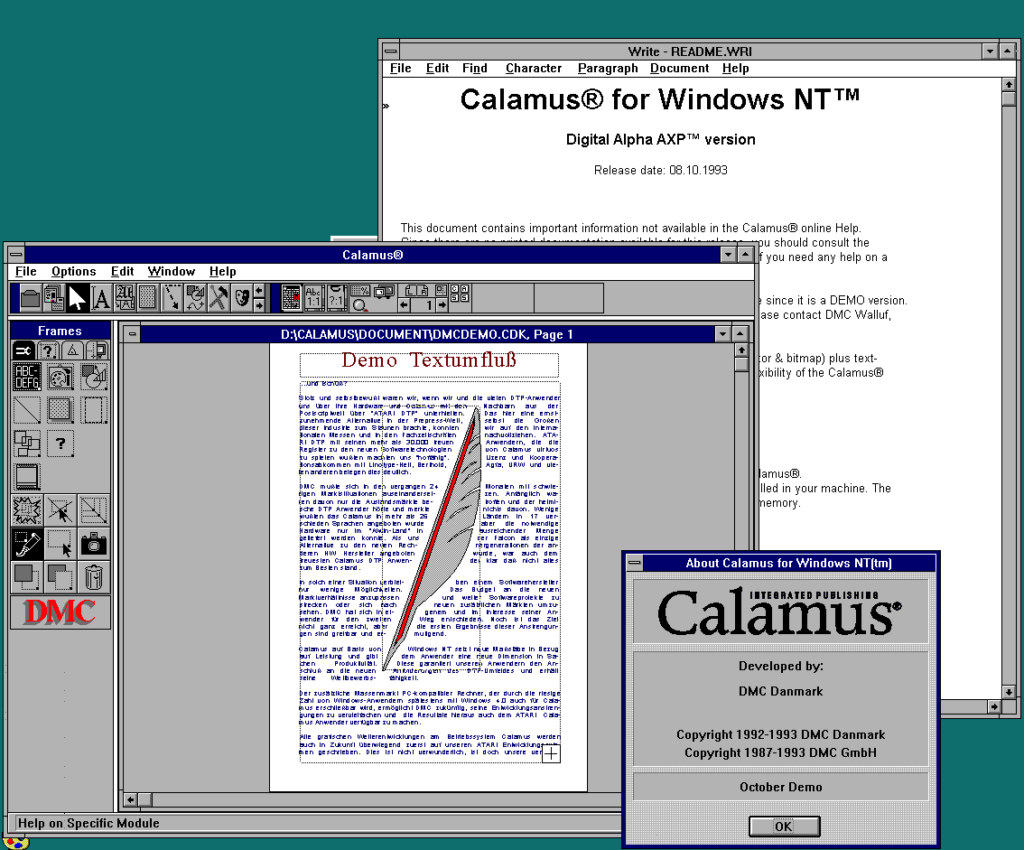
Also a demo version of a vintage, text-mode SlickEdit, way before it was replaced by the Visual SlickEdit known today.
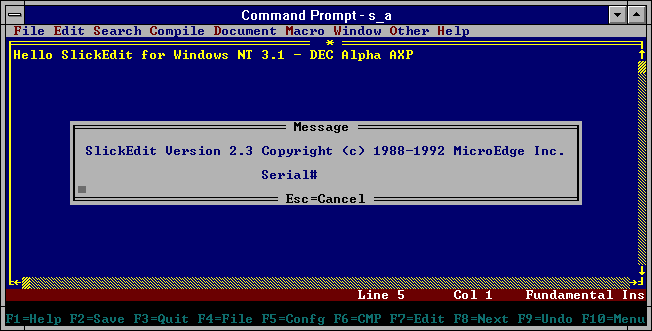
There also is WinDev editior, which is quite superior to Notepad and has some code editing goodies and shortcuts to SDK tools, making it something of a simple IDE.
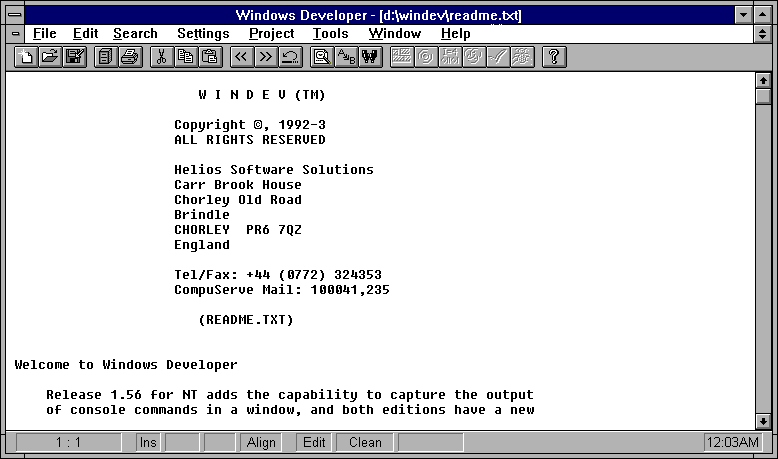
Another big source is Windows NT Application Sampler CDROM, (also from Smithsonian).
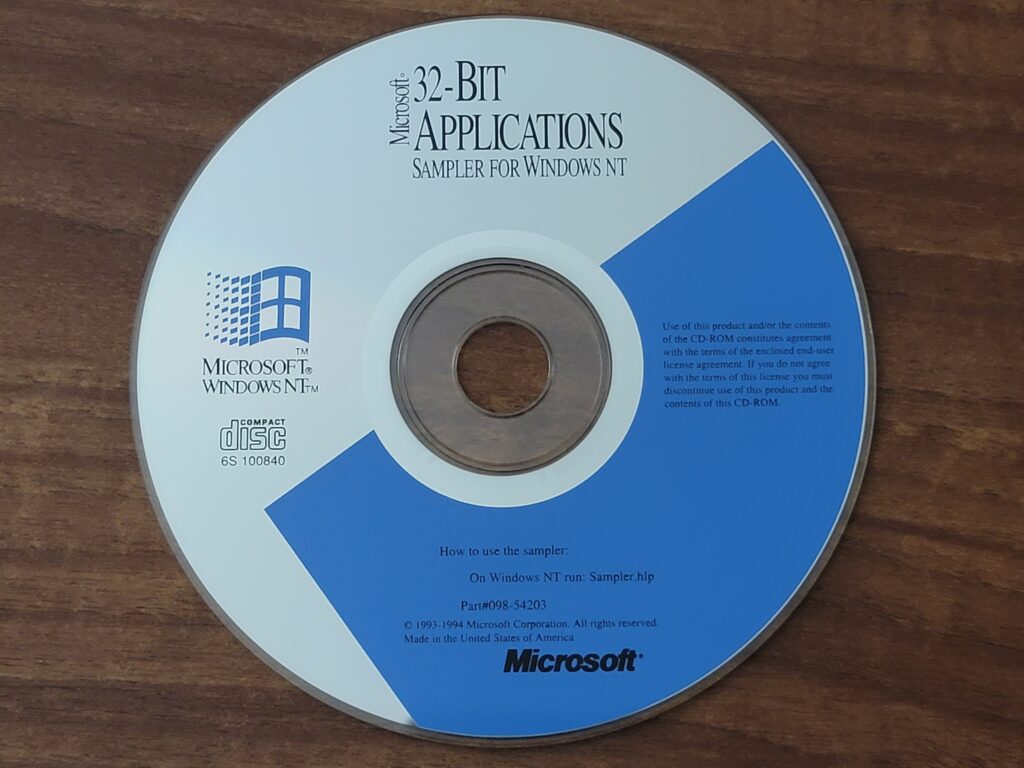
One of the coolest thing found there is a graphical text editor called WinEdit. It has a ton of features and even syntax highlighting! It has since became my default to go editor / IDE on this system!
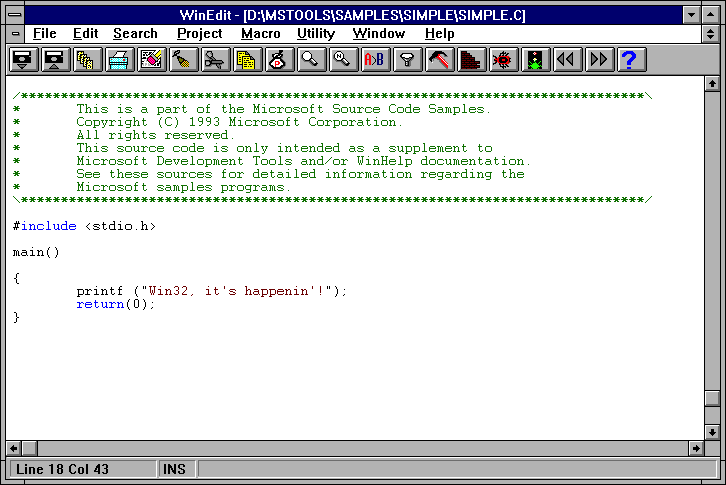
There of course is a Windows NT SDK with the M (MEP) editor.

There also are quite few public domain apps and games, ports of GNU software, Micro Emacs, Kermit, etc.
Update: CICA NT Shareware Collection has some interesting apps under the /alpha directory.
High Resolution GPU
One of things that was troubling me for some time was rather low resolution of the default QVision graphics card. The maximum being only 1024×768 is just not acceptable. Talking to several Jensen’s owners, no one even heard about anything better. However looking at the Windows setup options, I curiously noticed that the system does support one 1280×1024 video card – Number 9 GXE.

I simply assumed that such card would simply be unobtanium in 2023. However, digging through some old catalogs and spare part listings, I managed to find a DEC part number, which is 30-41800-01. Armed with this, I was able to find it via DEC spare part reseller that I often use. They had it in stock listed as “HIGH RES EISA 1280 x 1024 GRAPHICS”. The price wasn’t too bad either, at least compared to the whole endeavor. A few days later I received this:
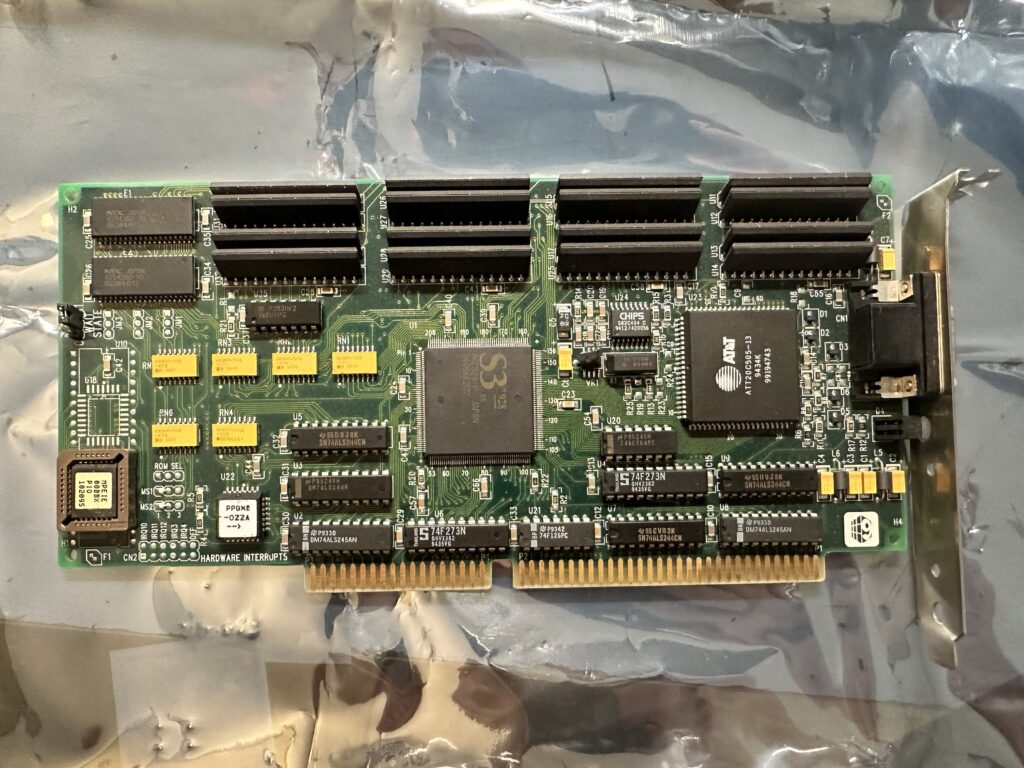
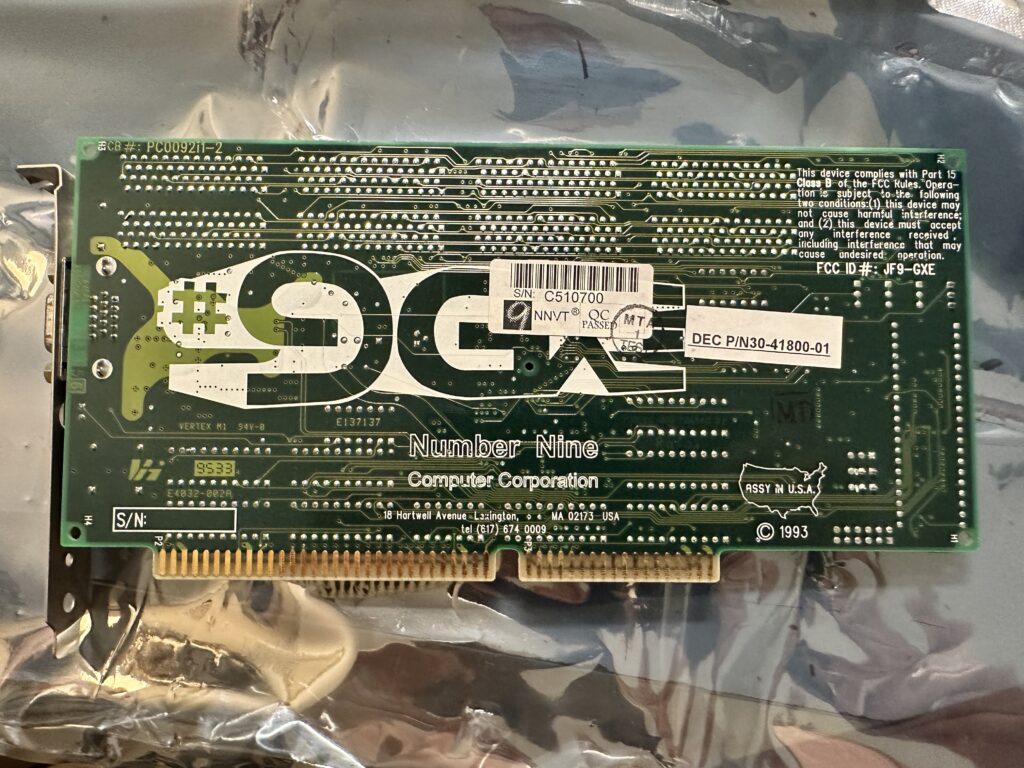
After installation of the S3 driver (must be the Service Pack 3 version!) I was finally able to get 1280×1024 from the poor thing!
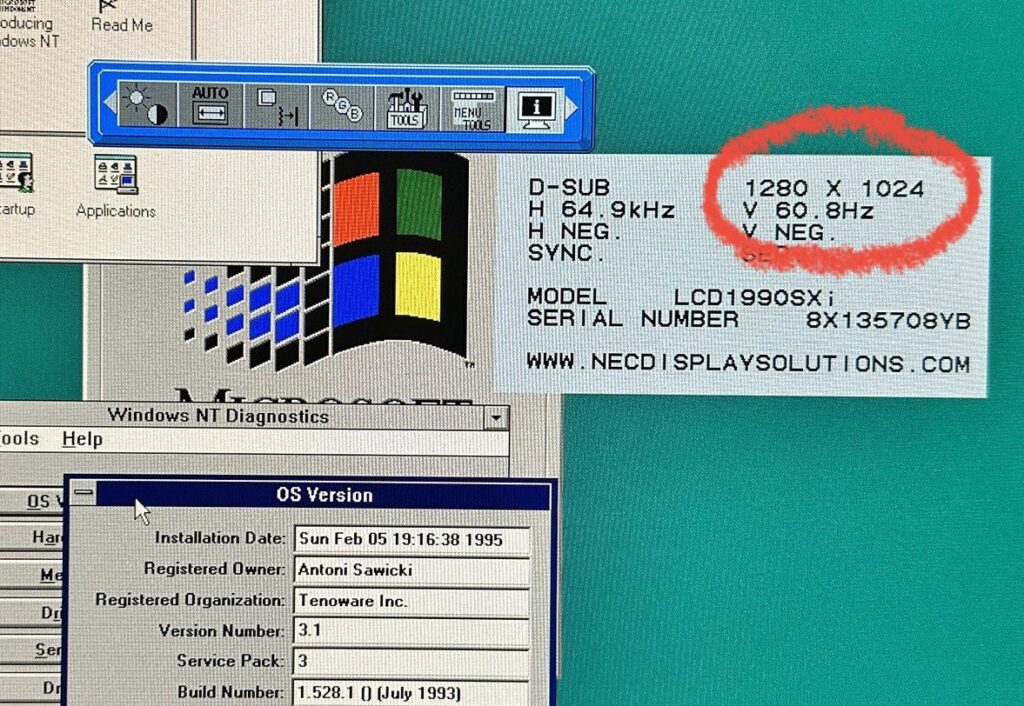
With this I should have a more cozy environment to compile and port even more apps 🙂
In future I want to try the Advanced Server edition as well as some early Betas with Alpha support.

Not directly related, but your comment about DEC increasingly using PC components to lower the price made me remember than for the original K7 Athlon AMD licensed the Alpha EV6 Bus, and at some point I hear about stories than there were plans for cross compatible Motherboards that could take either an Athlon or an Alpha (So I suppose than there would be Motherboards with a Slot A/Socket A plus another Slot/Socket for whatever the Alphas used, like with 486 boards with the Overdrive Socket, or even Alphas using the same thing themselves). Did anything ever came out from that? A prototype, whatever?
At some time there were rumors both AMD K7s and future Alphas would use the same Socket A at least the “desktop versions” which DEC envisioned for their future “diy” ATX kits. They were truly trying to simplify and consolidate the way Alphas communicate with the bus, and trying to get rid all the extra bus components and daughter cards. Unfortunately that was never gonna be, and here we are now.
Compaq stopped very early the projects with the Alphas using AMD chipsets, but Samsung, one of the partners, actually produced a few board batches, commercially available (but limited in availability ofc) using the AMD chipset. You will the most luckiest guy if you can get one of those Samsung UP1500 or even the mythic UP2000 which uses dual Alphas in a specific “Slot B” daughterboard. Both boards aren’t compatible with normal Athlon CPUs (UP1500 has the CPU soldered in board, and the UP2000 uses the aforementioned custom “Slot B” daughterboard. These boards are SRM firmware driven, so no NT compatibility at all.
Yeah I heard these rumors a long time ago. Not sure if anything ever happened with this. We may need to do some research. Also somewhat related, for many years I used AXPpci33 motherboard with Alpha CPU as an el-cheapo RISC workstation at home. These were OEM, PC/AT styled motherboards that you could install in any standard PC case, but with Alpha. They were rather slow tho.
“early betas with Alpha support”
…are any of those even dumped? I was under the impression that 528 was the earliest dumped NT 3.1 build for Alpha AXP.
MIPS, on the other hand, has dumped builds as early as 239 (December 1991), which needs the “correct” ARC firmware to run (due to an ABI break)
What would be crazy is if the supposedly existing Intergraph Sparc port would materialize…
Or HPPA, or SGI Indy – the problem is that even if they came up, you would need a little endian CPU for these. These were custom build CPU with flipped endiannes. I think MIPS can be reprogrammed, but not sure about SPARC or HPPA.
And you would need the firmware too. In the case of the SGI Indigo, for example… You have the HAL in source form in the leaked sources. So in theory would be possible to rebuild it from there…
But it would useless as we don’t have the SGI-MS ARC firmware dump for the Indigo. For many RISC NT machines is the same fate… You don’t only need the build, but also the machine itself, would be for the special wired CPU/Chipset as you said, or to dump firmware or specific microcodes which don’t exist anymore, or never came outside as commercial product.
I only used x86 Windows 3.1 at that time, but I loved it. Best Windows version ever
Oh thats awesome! I had one NetPower MIPS machine on the VCF West exhibit! https://virtuallyfun.com/2023/08/05/come-meet-tenox-check-out-the-nt-risc-collection-over-at-vcf/ – this is the machine https://virtuallyfun.com/wp-content/uploads/2023/08/NeTpower-Falcon-MP-starblazerII-scaled.jpg
I was part of the Postgres group at UC Berkeley. As a proof of concept, I ported an early version of Postgres to Windows NT (I don’t remember which version – probably 3.5) running on a NetPower MIPS Risc machine. I don’t remember why I didn’t choose an Alpha, since we had a bunch of them running OSF/1.
Oh thats awesome! I had one NetPower MIPS machine on the VCF West exhibit! https://virtuallyfun.com/2023/08/05/come-meet-tenox-check-out-the-nt-risc-collection-over-at-vcf/ – this is the machine https://virtuallyfun.com/wp-content/uploads/2023/08/NeTpower-Falcon-MP-starblazerII-scaled.jpg
Thanks for the post. It reminded me of the days I installed Linux in the Jensin. It was the first port from another processor than i386.
Fun read / adventure
Wow, the version of DECtalk on this CD, 4.1, is incredibly rare. The previous oldest version of DECtalk I knew of was version 4.2 for Alpha AXP, released in 1994, and this version runs on both Alpha AXP and Intel processors. Thanks for mentioning it! Tip. To get this demo running, set your date back to somewhere in 1993, either manually in your clock settings or using a tool like NirSoft’s RunAsDate
Oh, good memories! I happened upon one of these when I was working as a software QA engineer at Macromedia (now Adobe) in 1996. The group I was working with had been bought lock stock and barrel to provide Macromedia with an image editor (xRes).
Apparently before xRes was bought by Macromedia, they were courted by DEC and given one of these to encourage app development on the platform. I think DEC were pretty generous with hardware in this way, Macromedia had a lovely, huge DEC Alpha multiprocessor server under similar terms, with a 5-drive RAID rack and all the server goodies.
It happened to be in a cubicle they were moving me into, and I asked what it was. The reply was “that thing’s USELESS.” Words that to me, are like waving a red flag at a bull. So I turned it on and was surprised to see an NT 3.1 boot screen. Nobody remembered the password, though. I sat there and thought that maybe I could hack it. My second try was “xRes,” and that got me in.
I had access to the 3.5 installer floppies, so I gave that a go and it went smoothly. At the time, Macromedia’s IT department were pretty weak with support for Windows 95 long filenames and Windows support in general (they later hired me to help with that), so I got hold of a castoff SCSI hard drive and started using it as my own personal network server. Then my whole team started using it as such due to the aforementioned lameness in the IT department.
When NT 4.0 came out, it was the last version that supported the Alpha, and it again installed just fine (I had installed a CD-ROM drive by that time). I eventually leveraged what I learned about NT networking and hardware on that Alpha into a career change that happened at just the right time. The world was migrating to Microsoft Windows networking and experienced systems engineers were scarce. I got my MCSE for NT when nobody else seemed to have them.
When I left the company a couple of years later, the system (ALEC ALPHA-they didn’t want it but I built it anyway) had been retired and was gifted to me by my old group as a going away present. I kept it running as my home web and file server for a few more years. Being built like a tank, it was still working fine when I retired it.
If you set up a 4.0 boot on it, that will get you Internet Explorer at least. My memory may be faulty, but I seem to recall that even Netscape did a build for it at one point. Not 100% sure of that, though.